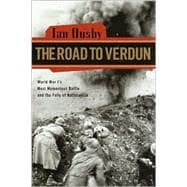
Note: Supplemental materials are not guaranteed with Rental or Used book purchases.
Purchase Benefits
What is included with this book?
|
vii | ||||
|
xi | ||||
| Prologue: The Road to Verdun | 1 | (60) | |||
| PART ONE FRICTION AT VERDUN, FEBRUARY 1916 | |||||
|
61 | (35) | |||
|
96 | (47) | |||
| PART TWO THE ENDLESS CRISIS, 1510-1914 | |||||
|
143 | (30) | |||
|
173 | (32) | |||
|
205 | (48) | |||
| PART THREE THE MILL ON THE MEUSE, MARCH-DECEMBER 1916 | |||||
|
253 | (40) | |||
|
293 | (38) | |||
| Epilogue: The Road from Verdun | 331 | (16) | |||
| Sources and Notes | 347 | (34) | |||
| Acknowledgments | 381 | (2) | |||
| Index | 383 |
The New copy of this book will include any supplemental materials advertised. Please check the title of the book to determine if it should include any access cards, study guides, lab manuals, CDs, etc.
The Used, Rental and eBook copies of this book are not guaranteed to include any supplemental materials. Typically, only the book itself is included. This is true even if the title states it includes any access cards, study guides, lab manuals, CDs, etc.
Excerpted from The Road to Verdun: World War I's Most Momentous Battle and the Folly of Nationalism by Ian Ousby
All rights reserved by the original copyright owners. Excerpts are provided for display purposes only and may not be reproduced, reprinted or distributed without the written permission of the publisher.